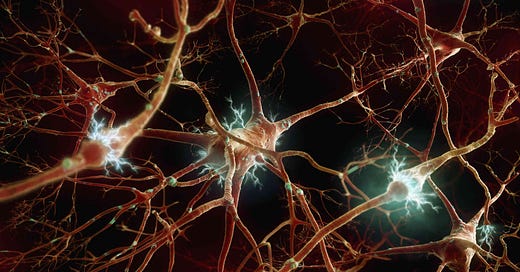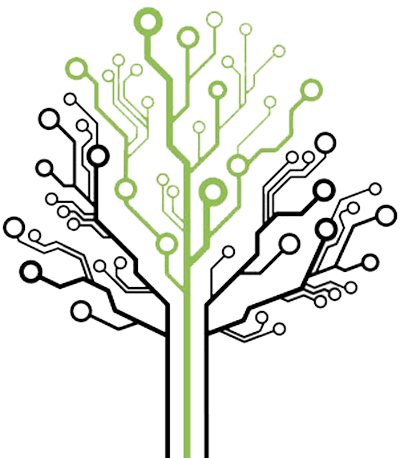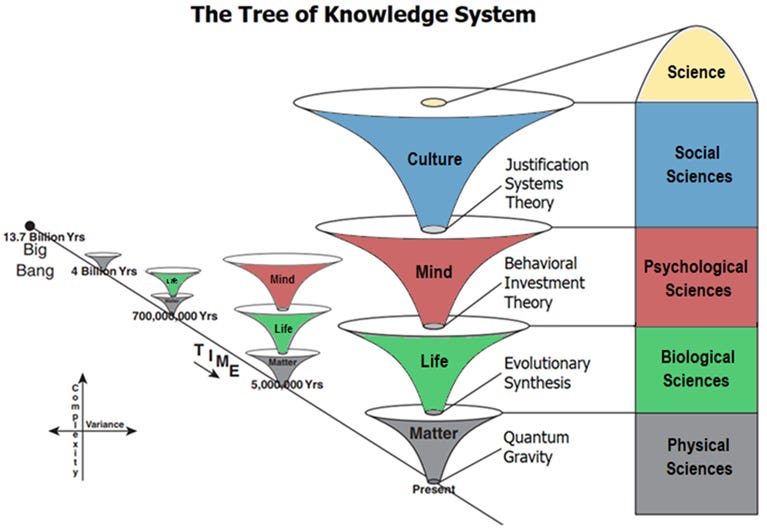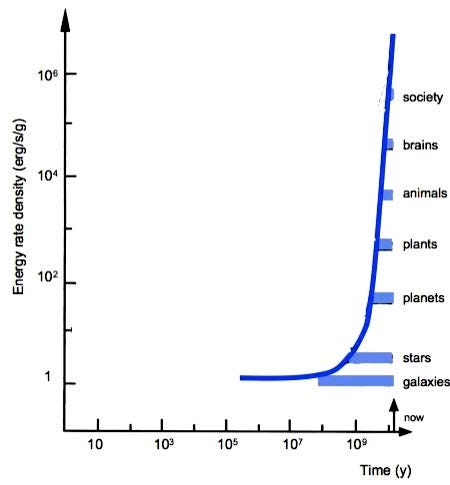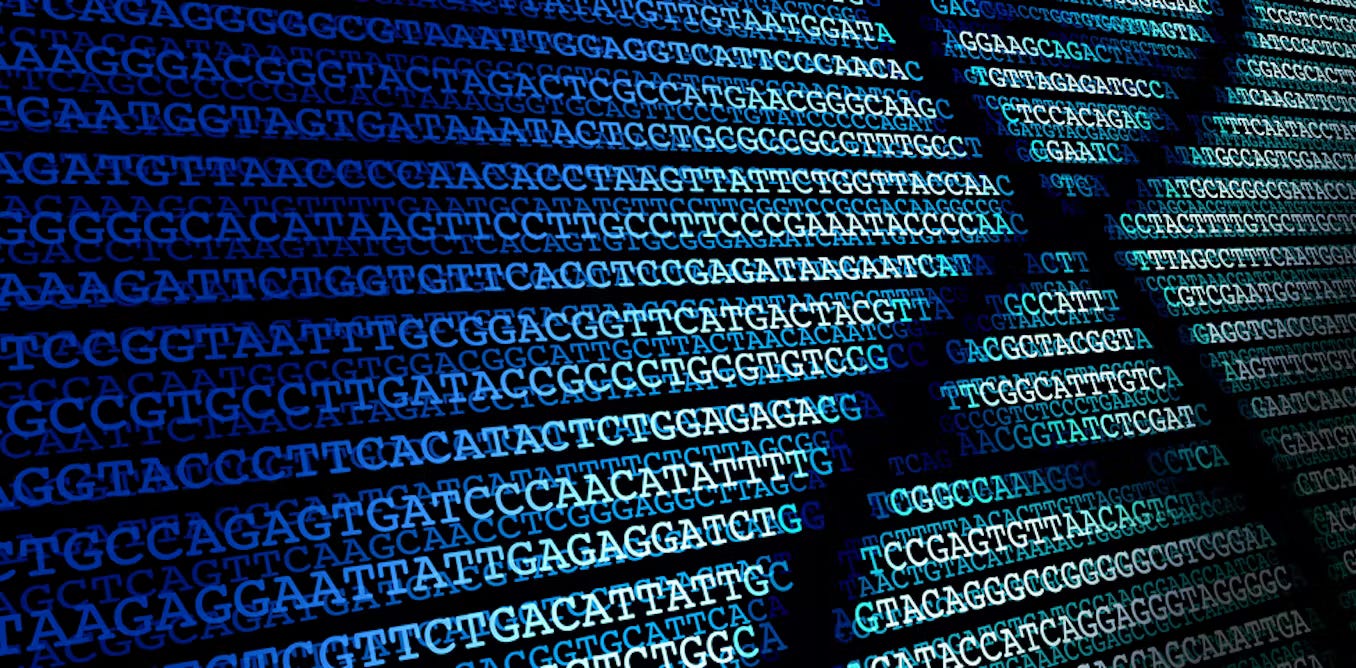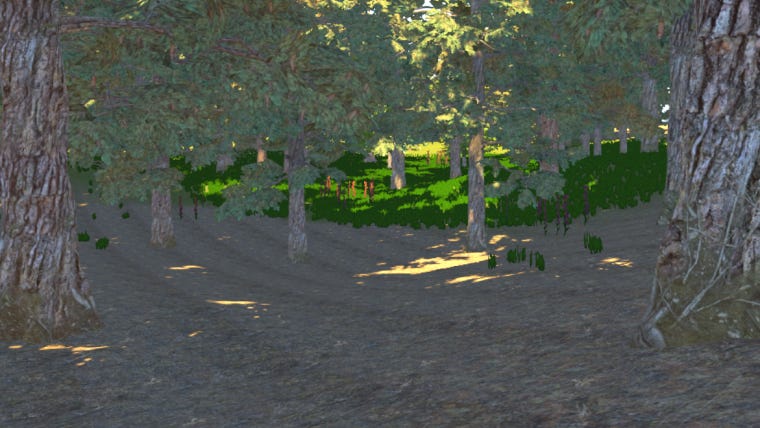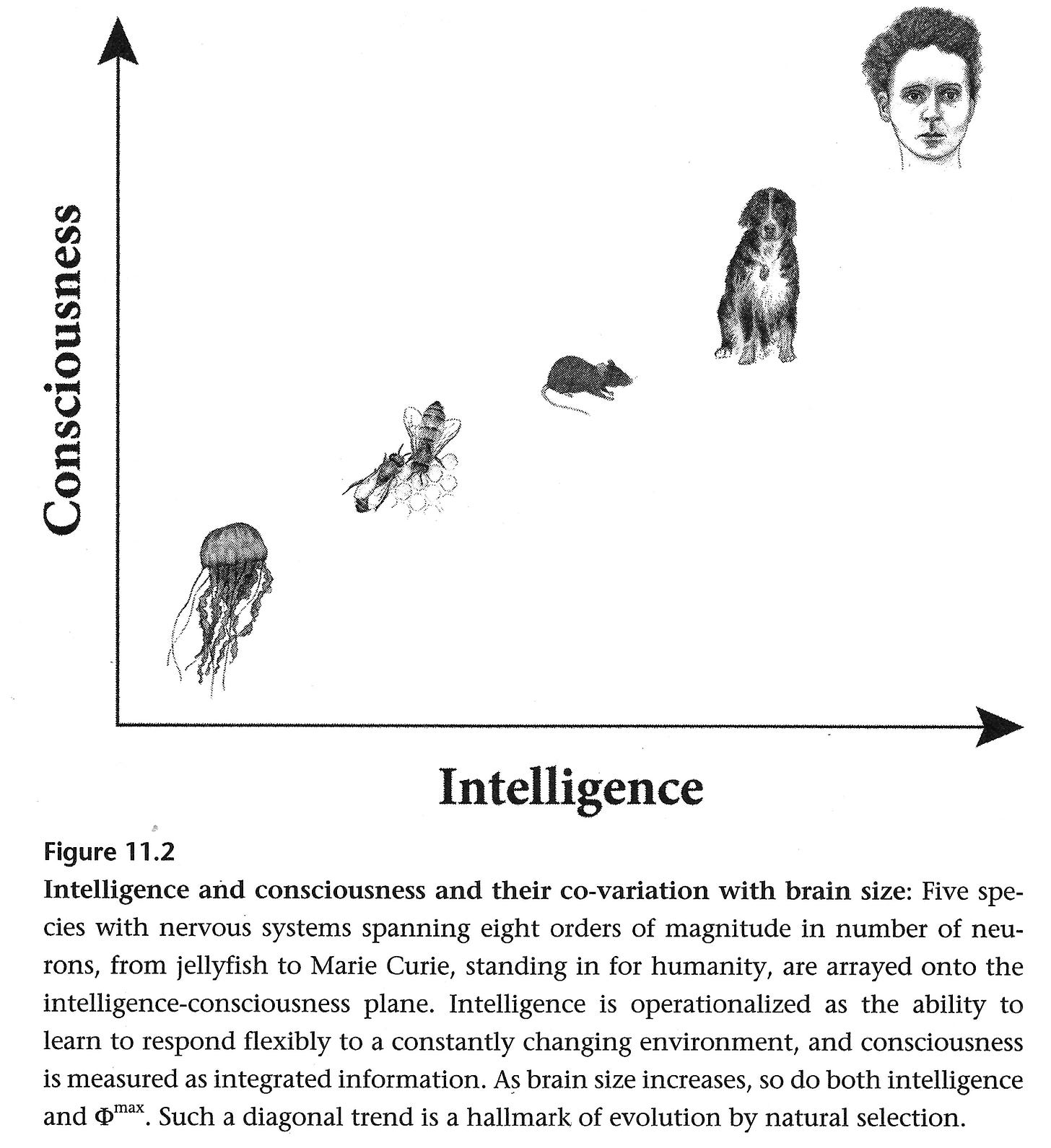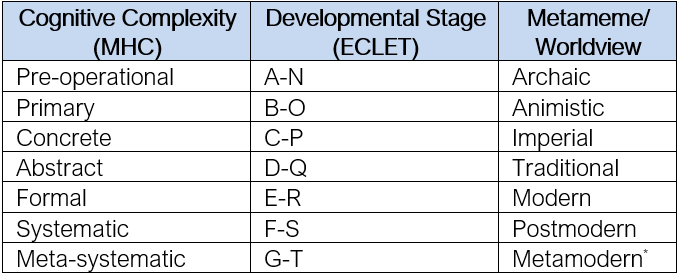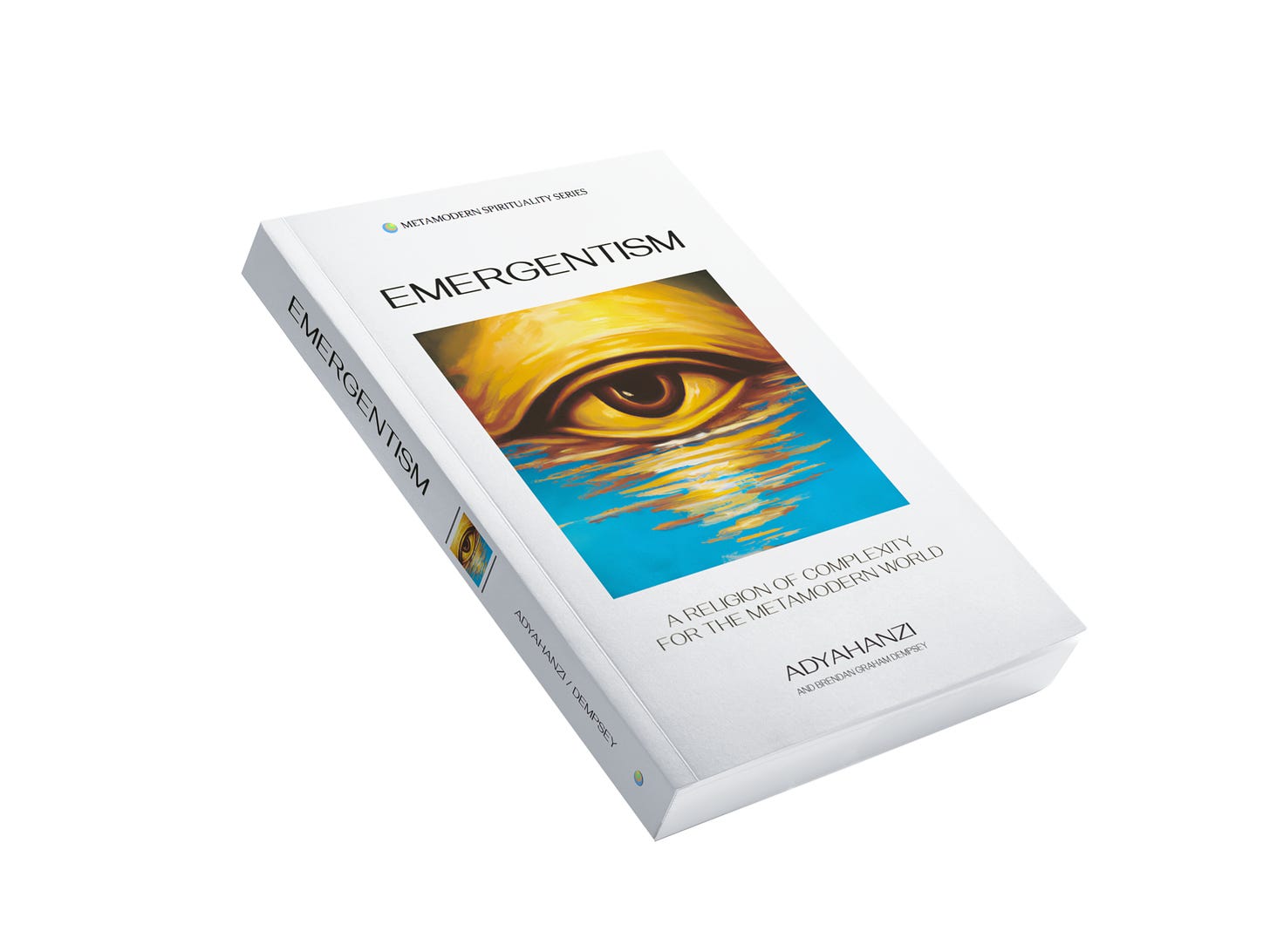Complexification and Knowledge
The revelations of complexity science have been truly revolutionary. Across the many fields of inquiry in this diverse new scientific paradigm—from non-equilibrium thermodynamics, to origins of life research, to evolutionary biology, to consciousness studies—new discoveries and insights have been accumulating which radically shift our sense of how the universe works as well as our place in it. Ideas like self-organization, dissipative adaptation, emergent levels, and emergent causation have truly reframed reality as we know it.
Today, these insights are being synthesized and integrated, yielding fascinating new grand unified theories that offer nothing short of a whole new worldview for our time. In these comprehensive, integrative visions, we can finally see how all of these incredible discoveries hang together—what it all really means, and what it means for meaning itself.
In his deeply insightful 2022 book The Romance of Reality: How the Universe Organizes Itself to Create Life, Consciousness, and Cosmic Complexity, neuroscientist and science journalist Bobby Azarian brings together a vast number of threads of inquiry to articulate a compelling “Unifying Theory of Reality,” which comprehensively harmonizes the many insights from complexity science into an elegant and profound idea.
What idea is that?
The emergent evolution of the cosmos, Azarian demonstrates, is actually a learning process.
Uniting conceptual paradigms like universal Darwinism, universal Bayesianism, and evolutionary epistemology, Azarian’s “integrated evolutionary synthesis” identifies the key algorithm common to all enduring change in the universe: Through continual experimentation and retention of successful attempts, more information about the world is processed, whereby everything in the universe evolves and complexifies. From the dissipative adaptation of material to the evolution of biological organisms to the cultural enterprise of science itself, the landscape of reality is learned better and better through continual trial-and-error refinement.
In the various explorations of the universe’s probability space, matter that self-organizes best to dissipate free energy “learns” its environment and is retained vs. matter that doesn’t; such matter that then self-replicates flourishes as life vs. matter that doesn’t. The genetic codes of lifeforms that more effectively map to their environment are retained vs. those that don’t; lifeforms that can learn their environment by means of brains are retained vs. organisms that don’t. Brains that learn conceptual knowledge through experiment and reflection flourish vs. those that don’t—and so on.
At every stage, a learning process is underway, and knowledge accumulates. By ceaseless trial and error, the universe is discovered more fully, reality is more intelligently engaged, more information about it is processed, and the subjective model comes to match more accurately what it seeks to represent: objective reality.
Such is the education through complexification that has been occurring since the Big Bang, says Azarian. “You could say that energy organizes matter into life,” he writes,
and life organizes information into knowledge. And it is knowledge that makes the universe comprehensible to intelligent life. Or, from a less anthropocentric per-spective, it is knowledge that allows the universe to comprehend itself, through intelligent life. We must remember that we are not distinct from nature but a functional manifestation of it.
Indeed, this framing—that it is the universe that is best understood as the entity ultimately undergoing this learning process by means of intelligent life—is key to Azarian’s broad conception of what complexification is really all about:
As cosmologist and science educator Carl Sagan famously put it, “We are a way for the cosmos to know itself.” Rather than brushing it off as merely a poetic metaphor, this book takes Sagan’s statement seriously and places it within the context of cosmic evolution. In doing so, we see that adaptive complexity has initiated a cosmic awakening process that is only just beginning. Where it ends is to be determined. Exactly how the story goes curiously appears to crucially depend on the actions of intelligent life. In fact, it could depend in some meaningful way on you, and on us, collectively.
As the living organisms at the knife’s edge of this cosmic awakening process, humans occupy a unique position in the history of the universe. Because of our complexity, we are participating in a special way in the universe’s evolution towards greater self-knowledge. The thermodynamic and evolutionary story revealed by complexity science is one that leads, through us, to a more conscious, intelligent, and intentional cosmos. As Azarian succinctly expresses it:
The assumption that our world is gradually drifting toward a more disordered, random, and lifeless state is utterly wrong and the result of a fundamental misunderstanding of thermodynamic law. If it is accurate to think of the cosmos as a massive computational machine, it is not one that is winding down. In terms of adaptive complexity, it appears to be just getting started. Through a series of hierarchical emergences—a nested sequence of parts coming together to form ever-greater wholes—the universe is undergoing a grand and majestic self-organizing process, and at this moment in time, in this corner of the universe, we are the stars of the show. As cosmic evolution proceeds, the world is becoming increasingly organized, increasingly functional, and, because life and consciousness emerge from sufficient complexity and information integration, increasingly sentient. Through the evolution and eventual outward expansion of self-aware beings like ourselves, and their efforts to organize matter into arrangements that support information processing and computation, the universe is, in a very real and literal sense, waking up. It is not waking up independent of us, as in a panpsychic sense, but through us…
Sentience has thus emerged out of pure matter, deepening through evolution so as to process information at higher and higher resolutions of fidelity and accuracy. Consciousness itself, then, emerges as a natural part of the process by which the universe learns more about itself. Energy’s natural organization of matter into more complex forms leads unavoidably, through life, to mind and to the psyche, as these emerge out of one another so as to better learn reality.
Coming to these issues quite independently—through the lens of psychology—Gregg Henriques, a professor of psychology at James Madison University, has formulated his own unified theory in an attempt to better understand the emergent and multi-tiered nature of consciousness. Proposed as a solution to the fragmented, theoretical confusion plaguing the field of academic psychology, the Unified Theory of Knowledge (UTOK) is a big history framework that places the evolution of the mind within the full context of the universe’s complexification process.
Like Azarian’s Unifying Theory of Reality, Henriques’s Unified Theory of Knowledge recognizes a “series of hierarchical emergences” distinguished by increasingly complex means of information processing. UTOK’s map of this series is poetically dubbed the “Tree of Knowledge” (ToK), since it depicts the different complexifying branches of the sciences growing up from the original simple seed that sprouted at the Big Bang:
“The most novel aspect about the ToK System,” writes Henriques in his book A New Unified Theory of Knowledge,
is the ontological claim that there are four distinguishable dimensions of complexity. …[T]hese separate dimensions emerge because of the evolution of novel information processing systems. According to the ToK system, genetic information processing gives rise to the dimension of Life, neuronal information processing gives rise to the dimension of Mind, and symbolic information processing gives rise to the dimension of Culture.
Since these familiar words (Life, Mind, and Culture) are here terms with specific meanings—as levels of complexity tied to specific information processing mechanisms—it is worth a quick tour of the “Tree of Knowledge” to make sure we know just what we mean by them, since they provide us with a highly useful way to speak about the principal levels of emergence.
Writing in a 2019 article in the Journal of Big History, Henriques and his colleagues summarize the different levels this way:
The “Matter” cone at the bottom represents the emergence and behavior of inanimate material objects from the time of the Big Bang, and includes entities such as atoms, stars, and planets. Particles like electrons represent the base of the cone as they are the simplest entities, whereas entities like macromolecules found in organic chemistry correspond to the top of the material cone.
The “Life” cone represents the behavior of organisms, ranging from the simplest single-celled creatures (e.g., bacteria) up through large, complex multi-celled organisms (e.g., an oak tree).
The “Mind” cone represents the behavior of animals with a brain, ranging from nematodes at the base (i.e., worms with simple brains) through highly complex and sophisticated animals, like chimpanzees, dolphins, and elephants.
Finally, the “Culture” cone represents the behavior of human persons embedded in linguistic traditions and sociocultural historical contexts. It ranges in scale and complexity from individual persons to the behavior of modern, complex nation states or other societal structures organized by large-scale systems of just-ification.
Matter, Life, Mind, and Culture. Such a sequence, Henriques himself observes, “directly overlaps” with Eric Chaisson’s chart shown earlier (p. 44), in which the complexification of cosmic evolution is measured according to free energy rate density. In this way, increasing energy flow can be shown to correlate with increasing information processing capacity.
Unifying theories of complexity such as Azarian’s and Henriques’s bring together numerous strands of evidence into a clearly discernable big picture of reality. According to this picture, as the universe complexifies through a learning algorithm of experimentation and selective retention, it has hit upon new information processing mechanisms that have occasioned a few quantum leaps in knowledge accumulation. This increase in knowledge proceeds alongside increases in power (free energy rate density), configurational complexity, depth of sentience, and degree of intelligence.
This process we will now consider in more detail, as it is crucial for painting in the empirical picture that Emergentism will express in more spiritual, theopoetic terms.
Matter: System Constraints
Before we can consider what complexification means for knowledge creation and information processing, we must first consider the conditions required for such processes to be able to occur at all.
As the basis of information processing, Matter doesn’t so much compute as provide the means of computation. Obvious as it may sound, the system in which information would be processed needs to be set up in such a way that information can, indeed, be processed. Knowledge of the world requires a world in which knowledge is possible.
Such a world, however, is by no means a given. In fact, for the information processing system that is the universe to exist at all, a number of extremely precise and sensitive conditions must prevail.
When physicists went looking for the deepest laws of reality, they found certain physical “first principles”: fundamental forces (such as gravity and electromagnetism) operating at certain fixed intensities and in certain fixed relations with one another. The strength of the strong nuclear force, the specific charge of the electron and proton, the rate of the universe’s expansion, along with dozens of other quantities all represent certain numerical constants “baked in” to the nature of reality since the beginning. Indeed, such numbers are, in essence, what determine the very conditions of reality itself.
Since intelligent knowers did indeed emerge to discover these constants, it is not surprising that they allow for just that: the emergence of intelligent observers!
What is surprising, though, is that, as first principles, there’s absolutely no reason they had to…
In his book on big history, Three Big Bangs: Matter-Energy, Life, Mind, philosopher Holmes Rolston III remarks about the first of the three:
[T]here is nothing in physics that predicts this particular exploding universe with its laws, constants, instant inflation, initial conditions, and particular arrow of time. “The simple and absolutely undeniable fact is that the universe did not have to have the particular laws it does have by any logical or mathematical necessity” (Barr 2003:148). …The range of values of some quantity that is life-permitting (such as the strength of the force of gravity) is small compared with the range of values that physical theory might otherwise allow.
Rolston cites a slew of examples of this phenomenon—what physicists refer to as the universe’s “fine-tuning.” For instance, “The value of [the] strong nuclear force (ε) as figured into equations is 0.007. What if it were a little different? …If ε were 0.006 or 0.008, we could not exist.” That’s a rather slim margin. And it turns out that our existence hangs on a number of just such extremely slim margins.
What about the rate of the universe’s expansion? Rolston cites Stephen Hawking:
If the rate of expansion one second after the big bang had been less by one part in 10^10, the universe would have collapsed after a few million years. If it had been greater by one part in 10^10, the universe would have been essentially empty after a few million years. In neither case would it have lasted long enough for life to develop.
Or how about the charges of subatomic particles?
The charges on the light electron and on the vastly more massive proton are exactly equal numerically. “Heaven knows why they are equal,” wondered George Wald, “but if they weren’t there would be no galaxies, no stars, no planets—and, worst of all, no physicists.
For whatever reason, the system of the universe is set up in such a way that it is stable and solid enough for information about the system to become known. Indeed, as the last quote paradoxically brings to our attention, without such fine-tuning of the system’s conditions, there could be no knowers to produce such knowledge!
This rather tautological outcome has led these discoveries to be chalked up to the so-called “anthropic principle”—“anthropic” because they are the very conditions required for the emergence of people to even know about them. But the term is something of a misnomer. Rolston argues, “it could better have been named ‘the biogenic principle’”—since people aren’t really the issue here, but the emergence of any form of intelligent life that can generate observational knowledge of the universe.
Well, by means of these Goldilocks conditions, the universe has expanded fast enough to ensure the continual allowance of free energy such that far-from-equilibrium observers can emerge—but not too fast that there’s runaway expansion and all Matter tears apart—nor too slow such that all Matter collapses back on itself. Likewise, the ratio of the strengths of the electromagnetic force and the strong nuclear force are such that they fall into the sliver of possible scenarios in which carbon-based life such as us is viable:
All the rules are in place, then, for the system to unfold as it has—for energy to dissipate as it does, for it to flow through matter and thereby organize that matter, thereby increasing complexity and consciousness, and thus knowledge of the universe, as it develops. As Rolston expresses it, “The ‘computational universe’ is programmed, as it were, to start simple and generate complexity, in the course of which it generates intelligent output, including life and mind. …The startup looks like a setup.” Or, as Azarian makes the point in a different context: “[L]ife is the inevitable product of an evolving, self-organizing universe. It is a natural expression of the cosmic code rather than an anomalous accident.”
This inevitability of intelligent life accords with the ”strong” anthropic principle, which, in Brandon Carter’s words, states that “the Universe (and hence the fundamental parameters on which it depends) must be such as to admit the creation of observers within it at some stage.” “To paraphrase Descartes,” he concludes, “Cogito ergo mundus talis est [I think, therefore the world is as such],” meaning the world is such that it can be thought about. Even stronger formulations, such as the “participatory” anthropic principle, claim that the world is such that it must be thought about. According to this view, Matter gains actuality only with observation. (Matter only exists alongside information about Matter…) However we interpret it, the universe is indeed “a setup” for intelligent life.
Life: Knowing In-Formation
The fundamental constants of the universe provided the conditions by which Life could and would inevitably emerge. And it was not until the emergence of Life that the universe produced organisms that could engage in genuine information processing regarding their environment (i.e., Matter).
Only after the discovery of DNA in the early 1950s did we finally began to understand the basics of such mechanisms. DNA, we now know, works like a code, a genetic language in four letters (A, G, C, and T) that provides the instructions for making proteins—the building-blocks for all of life’s designs. It is through mutations in the genetic code that living organisms vary. Ineffective design variations are then weeded out, and effective ones are retained, so the code that gets passed on is always “updating” as the environment “teaches” it more about itself (the hard way, we might add).
Natural selection thus represents a way for life to “learn” the environment (i.e., the nature of reality) at the level of the species. Information is conveyed at the genetic level, through DNA, which is amended according to the principles Darwin articulated. DNA that codes for designs that have a “better chance at surviving” propagate in their “modified form.” This is how organisms grow to more perfectly reflect the environments in which they live. By preserving specific designs that work, DNA encodes information about the environment in which those designs operate.
A successful organism is like a key that opens a particular environment’s lock; and just as the shape of the lock can be deduced from the shape of the key, so DNA stores knowledge about the environment. DNA is memory. Drawing on insights from the work of thinkers like Donald Campbell, Artemy Kolchinsky, David Wolpert, and Carlo Rovelli, Azarian writes:
A statistical correlation between the configuration of the organism and the state of the environment means that the two systems share information. …As a species adapts to a niche, both in form and function, the amount of mutual information between the organism and its environment grows, such that we can say the adaptive system “learns” about its niche. For a species, growing more correlated with a niche means gaining more knowledge about that niche, which equates to becoming a better predictor of that niche. Semantic information is the mutual information that is causally necessary for the organism’s survival.
Put in a more immediately intuitive way:
In a completely literal sense, a dolphin’s streamlined design, which is a product of the information stored in its genome, contains a knowledge of hydrodynamics. Similarly, an eagle’s wing design contains a knowledge of aerodynamics.
The design of the organism includes an implicit model of its environment. In making this point, Azarian quotes David Krakauer of the Santa Fe Institute, who observes: “Life seeks to represent the world in which it lives: to encode reality. That is what a genome does.”
This is the first level of information processing—a form of “computation” done through the coded language of genetics, whereby information about the environment (i.e., reality) is stored in DNA and updated by pruning of the species as a whole.
For the first couple of billion years that Life was around on Earth, this was the only way it could gain the usable knowledge it needed to navigate its environment effectively. Eventually, though, as organisms explored the possibility space through the trial-and-error experimentation of evolutionary variation, a new adaptation emerged that would provide immense advantages in the struggle for life: brains.
Mind: Mental Modelling
A nervous system allows organisms to respond in real time to information coming in from their environment. By being able to sense what they were interacting with, neural organisms can build up complex internal models of what’s outside of them, and use that map to navigate more effectively towards energy and away from predators.
In this way, information is no longer encoded only at the level of DNA, but also within the individual organism’s own mental memory. This has profound advantages, for now the learning process can occur much quicker and in more refined ways.
Before, it took the death of countless organisms to slowly update the species’ code; now, in addition to that mechanism, each individual’s experience could update their own information about reality simply by updating their own internalized model of the environment.
The advantages of this meant that there was an evolutionary push towards more and more refined mental models of reality. This meant more complex nervous systems with more memory capacity—that is, bigger and more powerful brains.
Of course, more powerful brains require more energy in turn: You’ve got to spend energy to get energy. So the organisms best equipped to stay far from equilibrium became the ones with the most sophisticated mental models of reality, which themselves require the most energy—all of which fuels complexification.
Integrated information theory (IIT) is a theory of consciousness that directly correlates the increase in nervous system complexity with deepening internal mental experience and computational intelligence.
In essence, it posits that the relational complexity of a system—that is, the way its parts relate to form an irreducible whole with unique causal power—provides a measure of the information integrated by the system, and it is this metric that correlates directly with the depth, intensity, and resolution of mental life.
A greater number of parts in a greater number of relationships gives a greater degree of “integrated information.” In a nervous system, those parts are neurons, and their relationships create an irreducibly complex structural whole—a measure that can be computed using a quantifiable metric, Φ (phi). As brains grow in size and complexity, Φ increases, such that the Mind not only processes more information but also awakens to a more conscious subjective depth.
In his 2019 book on integrated information theory, The Feeling of Life Itself: Why Consciousness is Widespread But Can’t Be Computed, neuroscientist Christof Koch writes:
How does brain size affect consciousness? Bigger networks have combinatorially more potential states than smaller ones. …[I]ntegrated information in nervous systems shaped by the fierce forces of natural selection over eons will increase with brain size. As a consequence, the ability of the current state of such a network to constrain trillions of its past and future states becomes more refined as network size grows. That is, the bigger the brain, the more complex its maximally irreducible cause-effect structure may be, the bigger its Φmax and the more conscious it becomes.
The rise of more complex brains, and thus higher Φ, is driven by evolutionary pressures; consciousness is evolutionarily advantageous. Koch observes, “As adaptation increases, so do the animat’s integrated information and the number of distinctions the system is capable of supporting. Thus, evolution selects organisms with high Φmax.”
So has the evolutionary process driven the deepening of Mind, from simpler animals to those with rich internal models of reality—a trajectory Koch maps in the figure below:
Humans, who exceeded in this drive towards mentalization, became the most complex of all. Estimating the free energy rate density of the human brain—his preferred metric for complexity—Eric Chaisson writes:
In turn on up the complexity continuum, the adult human brain—the most exquisite clump of matter in the known universe—has a cranial capacity of typically 1300 g and requires about 400 kcal per day (or 20 watts) to function properly. Our brains therefore have a Øm value of roughly 1.5 × 105 erg s-1g-1. This large energy density flowing through our heads, mostly to maintain the electrical actions of countless neurons, testifies to the disproportionate amount of worth Nature has invested in brains; occupying 2 percent of our body’s mass yet using nearly 20 percent of its energy intake…
To put this in perspective, according to the same metric, the free energy rate density for galaxies is 0.5; for stars, 2; for planets, 75; for animals, 20,000, and for human brains: 150,000! This makes human brains one of the most complex, energy-dense things in the known universe. Interesting…
Culture: Knowing the Knower
But, when it comes to human brains, the nervous system doesn’t tell the whole story. Building on the capacities provided by our large animal brains, Homo sapiens hit on an even better mechanism for information processing—one that would literally change the world: language.
This evolutionary adaption was such a profound game-changer, it led to the emergence of an entirely novel level of reality: Culture. Just as animal nervous systems provided an evolutionary leap in information processing over genetic learning, so did symbolic language provide an evolutionary leap over experiential learning. With language, it was now possible to learn conceptually, without even needing to directly experience a phenomenon first-hand or figure out a procedure for one’s self. Culture itself became the living memory system for individuals. And whereas all the individually learned information acquired by an organism was lost when that organism died, Culture allowed information to persist and accrete over generations, indefinitely.
But language brought an even more profound emergence: self-consciousness.
In A New Unified Theory of Psychology, Henriques provides a model for the emergence of self-consciousness within the linguistic context of Culture and the appearance of what he calls “justification systems.”
For, with the emergence of advanced minded animals, the physical environment was no longer the only one that needed to be navigated; there was now a social environment as well, whose successful navigation also had important implications for survival. “That is,” writes Henriques, “like nutritious food, social influence reflects a basic, primary need and desire.”
Facilitating social exchange, the development of language allowed hominids to communicate information not just about their outer world, but also about their inner mental one, including motivations, intentions, desires, etc. The social influence (and, thus, evolutionary advantage) this conferred led to an evolutionary pressure to render interior mental states more communicable—in a sense, selecting for self-refection. So it happened that we became fully conscious of ourselves as individuals with our own subjective worlds precisely because we were in collective contexts that rewarded inter-subjective justification. The self is born—through communion.
“What is the self-consciousness system?” asks Henriques.
In a nutshell, it is an evolutionarily novel mental apparatus that functions to build justification narratives that legitimize actions and claims. To put this in everyday terms, the self-consciousness system is the language-based portion of one’s mind that is narrating what is happening, why it is happening, and why one is doing what in that context.
Surprising as it may sound, self-consciousness required other selves to render it possible. The sense of self could not have emerged outside of society, because it is based on language and inter-subjective accounting. That is why self-consciousness is rightly understood as emerging not with Mind (which all animals possess), but with Culture. Only at the level of Culture has self-awareness and self-knowledge appeared in the universe.
The individual and their social environment are thus intimately linked. They exist in symbiotic relationship and co-evolve. As Henriques puts it,
The point of the Justification Hypothesis is that the self-consciousness system is designed so that it allows the individual to “download” the justification narratives of the current cultural context and utilize those narratives to navigate the social environment.
Because social contexts are, like other environmental niches, always changing, collective justification narratives are always evolving. Symbolic information adapts and changes. So Henriques notes:
Justifications are a great example of what Dawkins (1989) called a meme, which is a unit of cultural evolution. Much like genes, justifications interlock to form complex, functional systemic networks. And such systems can easily be envisioned to evolve.
Just as Life evolves by accretive modifications to DNA and Mind by accretive adjustments to experience, so Culture evolves by accretive conceptual development. Collective intelligence shapes meme networks—called “metamemes”—which individual self-conscious minds “download” to better navigate their environment. Such metamemes serve to justify, legitimate, and explain human behavior and natural phenomena in their unique contexts—making them effectively equivalent to what we have been calling worldviews.
Because worldviews are evolving, they are also complexifying, generating more sophisticated wholes by incorporating more and more of the knowledge from previous justificatory worldviews. Like other evolving organisms, as they complexify, their energetic input and output likewise increases. As energy structures what it flows through, so human societies reconfigure into “more elaborate forms” over time. As more complex environments produce more complex challenges, knowledge is forced to increase, further driving the evolution of worldviews.
Scientific fields established in the 20th century—such as the study of human developmental psychology and cultural evolution in sociology—have shed considerable light on these processes.
For example, the research of Clare Graves, a professor of psychology at Union College, led to Emergent Cyclical Theory (ECLET) in the 1960s and 70s, which identified a series of distinct, emergent “levels” of justification systems and value structures based on specific life conditions.
As conditions grow more complex, so does human psychology. “The psychology of the adult human being” wrote Graves in his book The Never Ending Quest,
is an unfolding, ever-emergent process marked by subordination of older behavior systems to newer, higher order systems. The mature person tends to change his psychology continuously as the conditions of his existence change. Each successive stage or level of existence is a state through which people may pass on the way to other states of equilibrium.
Graves envisioned these worldviews unfolding like concentric circles, each new one including yet transcending the previous—parts subsumed in ever-expanding wholes.
Through his research, he identified eight such levels to date, as well as a pattern by which they evolved one to the next. Like the famous “hierarchy of needs” devised by Abraham Maslow (one of Graves’s influences), these justificatory levels begin with the most basic physiological concerns and rise into more sophisticated and comprehensive modes, from A-N (“Autistic,” purely survival-focused), to B-O (“Animistic”), C-P (“Egocentric”), D-Q (“Absolutistic”), E-R (“Multiplistic”), F-S (“Relativistic”), G-T (“Systemic”), and H-U (“Differentialist”).
Later work by developmental psychologists such as Robert Kegan of Harvard University has yielded similar, corroborative findings at the individual scale with his Constructive Developmental Theory (CDT), while research by Ronald Inglehart and the World Values Survey project provide over 30 years of contemporary empirical data at the cultural scale (see, for instance, Inglehart’s book Cultural Evolution).
Given the relationship between information processing, social complexity, and worldview, studies in human developmental cognition have added clarity to some of the mechanics of such cultural evolution. Jean Piaget’s pioneering work in genetic epistemology, for instance, established a clear sequence to cognitive development—an endeavor that has since been advanced by neo-Piagetian researchers like Kurt Fischer and Michael L. Commons.
Commons’s “Model of Hierarchical Complexity” formalized the sequence, showing that cognition complexifies according to a part-whole logic, wherein each successive level builds on (and thus includes) the level before it in a tiered, hierarchical manner. The Model allows for the ranking of tasks and modes of thought according to a mathematically deduced complexity metric. In this way, conceptual paradigms can be assessed in terms of their relative complexity.
In his 2017 book The Listening Society, metamodern sociologist and philosopher Hanzi Freinacht (a protégé of Commons) argued for a direct connection between the hierarchical complexity of Commons’s cognitive stages and those from developmental psychology (e.g., Graves’s levels), suggesting an evolution of psycho-cultural metamemes whose advance is correlated with cognitive complexification and growing information processing capacity.
When we do this, we get a schema like the following:
We thus begin to see how cultural evolution and the complexification of worldviews follows the same trajectory as neurological, biological, and cosmic evolution. In the process, more of reality is mapped and modelled at higher and higher resolution. Evolution produces knowledge of the universe, first encoded in DNA, then experienced by minds, until minds become self-conscious through language, and more and more complex societies and worldviews emerge. As Jantsch concludes in The Self-Organizing Universe:
It becomes possible to view evolution as a complex, but holistic dynamic phenomenon of an universal unfolding of order which becomes manifest in many ways, as matter and energy, information and complexity, consciousness and self-reflection. …Natural history, including the history of man, may now be understood as the history of the organization of matter and energy. But it may also be viewed as the organization of information into complexity or knowledge. Above all, however, it may be understood as the evolution of consciousness…
All of this further validates the Unifying Theory of Reality articulated by Bobby Azarian, which posits a universe ever evolving according to a learning algorithm that increases in information processing capacity and deepens in conscious depth. That is the great story of the cosmos, one that leads directly to us. “We are the cosmos come alive,” Azarian writes, “not metaphorically, but literally.”
Looking at the bigger picture, we see that biological evolution, adaptive learning, and scientific progress all reflect an accumulation of uncertainty-reducing information encoded in genetic [Life], neural [Mind], and cultural [Culture] memory. The integrated evolutionary synthesis—based on the evolutionary epistemology-universal Darwinism-universal Bayesianism framework—recognizes that life, mind, society, culture, science, art, and technology are all manifestations of one evolutionary process, one thermodynamic process, one comput-ational process, unified by the concept of knowledge—adaptive complexity’s solution to the eternal problem of uncertainty and disorder.
And with this, we come full circle, since our history began with a consideration of the transition from the metameme of traditional religion to the modern reductionist metameme, which has itself yielded at last to the neo-holistic paradigm of complexity. We can now see that this very transition has been part of the learning process of complexification through time—the cosmic story of metamodern Emergentism, which arises at a moment when integrating the entirety of this process into a single justification narrative represents an urgent societal need. But for that, we’d need something like…well, a religion!
So, can it be done? Can this narrative of complexification, knowledge creation, deepening consciousness and human significance be articulated in a religious-like manner that speaks to the whole reality of the human person?
That will be the aim of the rest of this book.
NEXT: Chapter 4: Hermeneutics: Interpreting the Universe, Part I
(Notes for this chapter can be read online at https://www.brendangrahamdempsey.com/emergentism-notes)
Buy the full book here:

